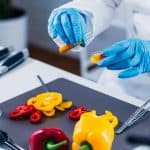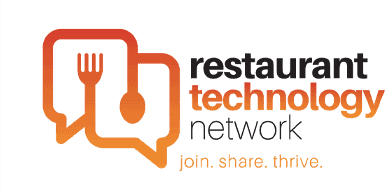COVID-19 has not only elevated the importance of restaurant sanitation and food safety to new heights within the industry, it’s also increased public awareness of food safety and sanitation measures to equally high levels. Such safety measures are now even more vital to the safety of both restaurant staff and customers, and the public is now actively knowledgeable about them. A customer’s decision as to where to spend their often diminished dining dollars is in large part dependent upon how confident they are about the safety measures being taken at their favorite establishments.
Technology can help improve food safety and boost customer confidence that you’re doing everything possible to safeguard their physical well-being in 8 important ways:
Inventory management
Inventory management technology allows kitchen staff the ability to track the freshness of food, ensuring only the best ingredients make their way into the final product. Tracking tools can also help determine the length of the journey from production to front-of-house.
Temperature monitoring
Temperature monitoring technology can be as simple as a Bluetooth thermometer that connects to a central system. Or, it can employ ambient real-time tracking devices installed into cold-holding units to monitor temperatures and notify management and maintenance personnel of any defective units.
This monitoring technology can help restaurant managers track temperatures, whether via tracking devices or through checks conducted by staff throughout the day, helping to ensure that all units are maintaining proper temperatures while also cutting down on food waste and helping to prevent foodborne illness.
Virtual reality
Virtual reality continues to infiltrate our technological consciousness. Now, more restaurants are beginning to use VR technology as a safer, more efficient way to onboard and train staff. New team members can be brought up to speed without subjecting customers to trainee mistakes that might decrease food safety or otherwise mar their dining experience.
Using a VR headset and custom software, trainees can get a 360-degree tour of an entire facility and participate in a variety of training exercises designed to give them the skills they need to effectively serve guests without having to touch any food or disrupt the dining experience.
Recipe viewers
Due to the pandemic, approximately two-thirds of all restaurant and hospitality staff lost their jobs. Many will be recalled to work after reopenings begin, but it’s likely that new staff members will also be needed. Using recipe viewer technology as a training tool can not only serve as a critical safeguard for the quality of a restaurant’s food, it can also help ensure that each item is prepared properly to avoid contamination.
Some recipe viewer technologies allow operators to include tips and notes for staff, including bin management protocols, messages to remind staff of proper cleaning or sanitation procedures, and reminder schedules for sanitation, trash takeout, station wipedowns, and more based on the specific reopening guidelines in your area.
Data analytics
Many kitchen display system platforms offer data analytics, which can help determine what items are selling, providing valuable information as to what works and what doesn’t for your clientele. In the context of restaurant food safety, it can help establish peak times of service as they evolve throughout the pandemic and beyond. Knowing the ebbs and flows of your business can allow establishment operators to more effectively determine strategies as to how and when to effectively clean and sanitize operations.
Crisis management
Crisis management technology can help document virtually every aspect of the restaurant operation to help manage food safety. In the event of a customer call or a health department visit for a possible foodborne illness, establishments need documentation to prove that all food safety practices were in place and functioning during the customer’s visit. Crisis management tech features such as online checklists, temperature logs, corrective actions, and employee illness logs can assist greatly during a foodborne illness crisis.
Contactless service
Contactless service technology offered by OneDine eliminates the need for hand-held menus and the passing of credit cards, receipt holders, pens, etc. by turning parking lots into touch-free takeout zones. Now that some restaurants are being allowed to reopen to varying extents, OneDine can also help make the tableside experience more convenient and contact-free, increasing food and aerosol pathogen safety for both customers and staff.
Touchless payment
With the OneDine system, guests can experience safe, contact-free payment to help ensure that servers aren’t also continually exchanging cash and cards with customers. Curbside, drive up, and delivery touchless options include:
- SMS messages with a link to an online payment portal
- A QR code that can be scanned in order to pay
- Ordering online via custom mobile browsing/ordering website with payment at checkout (or upon arrival via SMS or QR code)
- Or, depending upon contactless preferences, guests may walk inside to pay
For payments inside the dining room, diners can tap the table sensor to pay their check. For more information about touchless payment options or other methods for improving food safety, contact us, or schedule OneDine demo.





